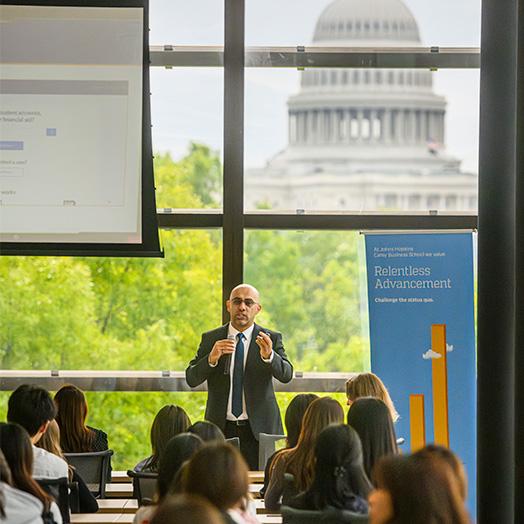Carey Research Examines Consumer Reaction to 'Conditional' Discounts
Study Co-Authored by Associate Professor Ozge Sahin Looks at Conditions for overspending
Associate Professor Ozge Sahin
Some shoppers find it hard to resist the siren song of a discount. A “conditional” sales promotion ― buy one t-shirt for $8 or two for $6 each; buy two bars of soap and save $2 off the total price ― is just the thing to make certain people spend more than they would have without a promotion.
The challenge for retailers is knowing how and when to offer such deals. Given consumers’ varying reactions to them, conditional promotions don’t always pay off.
Yet, as a recent study co-authored by a Johns Hopkins University researcher shows, savvy sellers can present the promotions in ways that may boost profits while also satisfying customers.
Consumers in this context can fit either of two descriptions, explains Associate Professor Ozge Sahin (right) of the Johns Hopkins Carey Business School, one of the three authors of the study. “Value-conscious” consumers appreciate a sales promotion solely for the cost savings it provides. Conversely, “deal-prone” shoppers are not only more likely to buy a product during a sales promotion because of the monetary savings, but they also derive a psychological uplift from the satisfaction of getting a good deal.
Deal-prone consumers are key to whether a retailer can present a conditional promotion and expect customers to spend more. When a large percentage of potential buyers in a specific situation are deal-prone, that’s a win-win, the study says. The retailer moves more product and takes in more profit, while shoppers enjoy the thrill of buying at a discount. In circumstances with few deal-prone shoppers, however, offering a conditional promotion to entice customers to overspend may lead to lower profits for the seller, according to the paper, which uses an analytical model created by Sahin and her colleagues.
Additionally, the paper’s findings refute the common belief that sales promotions are best applied to unpopular products.
“We found that even when customers highly value the product ― and they’re deal-prone, which is a critical factor ― the seller can still use a conditional promotion to increase his profit,” says Sahin, an expert in pricing and revenue management and supply-chain management.
The paper indicates two basic forms of conditional sales promotion. In an “all-unit discount,” the reduction applies to all items sold if the purchase meets a minimum eligibility requirement. For example, buy two or more stuffed animals and get 25 percent off the total price. In a “fixed-amount discount,” the final cost is reduced by a predetermined amount if the required minimum is purchased. That is, buy two or more shampoos and cut the total price by $3.
“A key finding from the research is that one kind of discount can prove more profitable than the other, depending on the market,” Sahin says. “When consumers aren’t willing to pay the regular price, the all-unit discount performs better, because only the all-unit discount can induce people to buy more than the minimum that’s required for the discount. On the other hand, when customers are already willing to buy something at the regular price, the fixed-amount discount brings more profit to the seller.”
She adds: “The important implication is that retailers should use an all-unit discount to stimulate sales of a high-price or newly launched item, while the fixed-amount discount is more effective as a frequent promotion of a low-price or established, brand-name product.”
As for markdowns, another staple of retail sales, conditional discounts tend to outperform them as profit generators for sellers, the study says. The appeal just isn’t the same for the deal-prone. Buying a marked-down item, the savings notwithstanding, isn’t as uplifting as, say, getting $5 off on the purchase of two shirts.
The authors say their study is the first, to their knowledge, that analyzes the different ways consumers respond to conditional discounts. It focuses on products with a relatively short shelf life, such as food, fashion accessories, and seasonal items, which retailers eventually would want to clear from their shelves through methods that include conditional promotions.
Titled “Conditional Promotions and Consumer Overspending,” the paper was recently published online in the research journal Production and Operations Management.” Along with Sahin of Johns Hopkins, the authors are Assistant Professor Thunyarat (Bam) Amornpetchkul of the NIDA Business School in Thailand and Professor Hyun-Soo Ahn of the University of Michigan.



